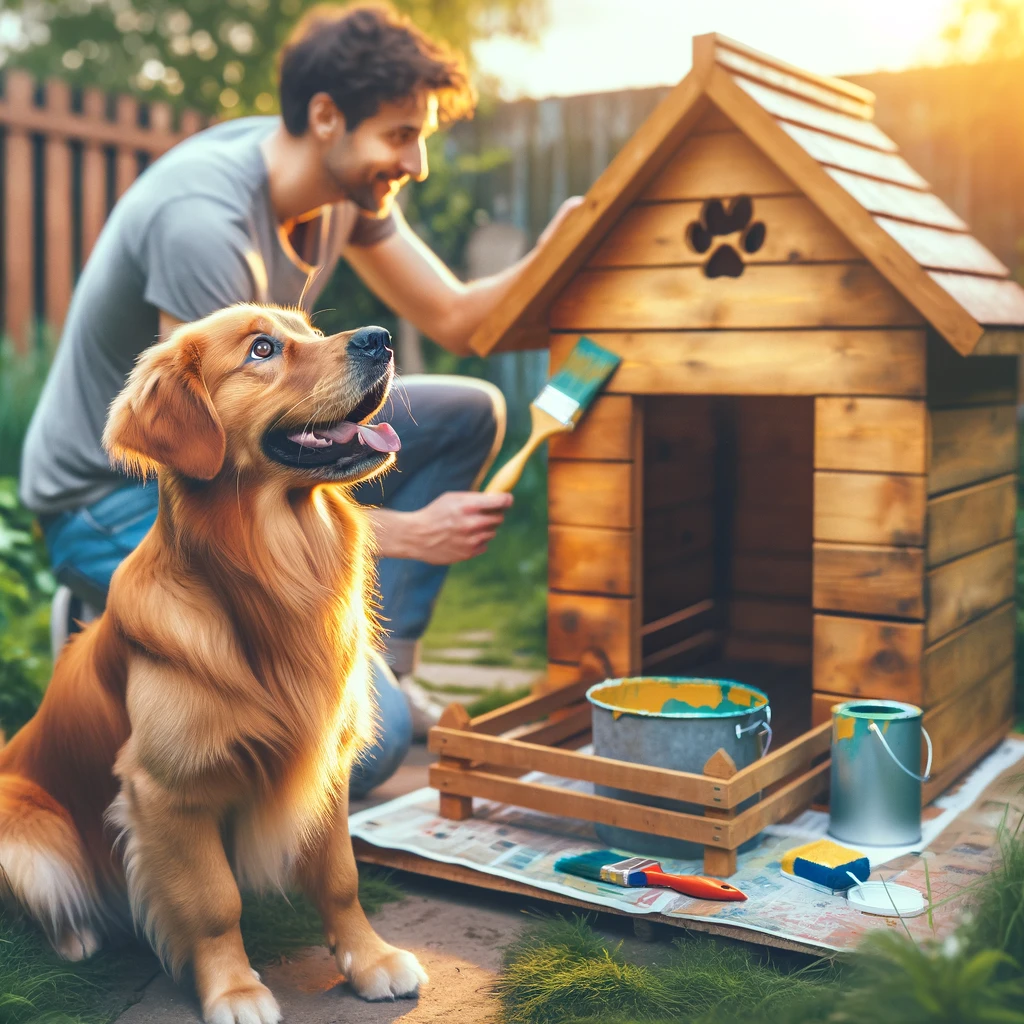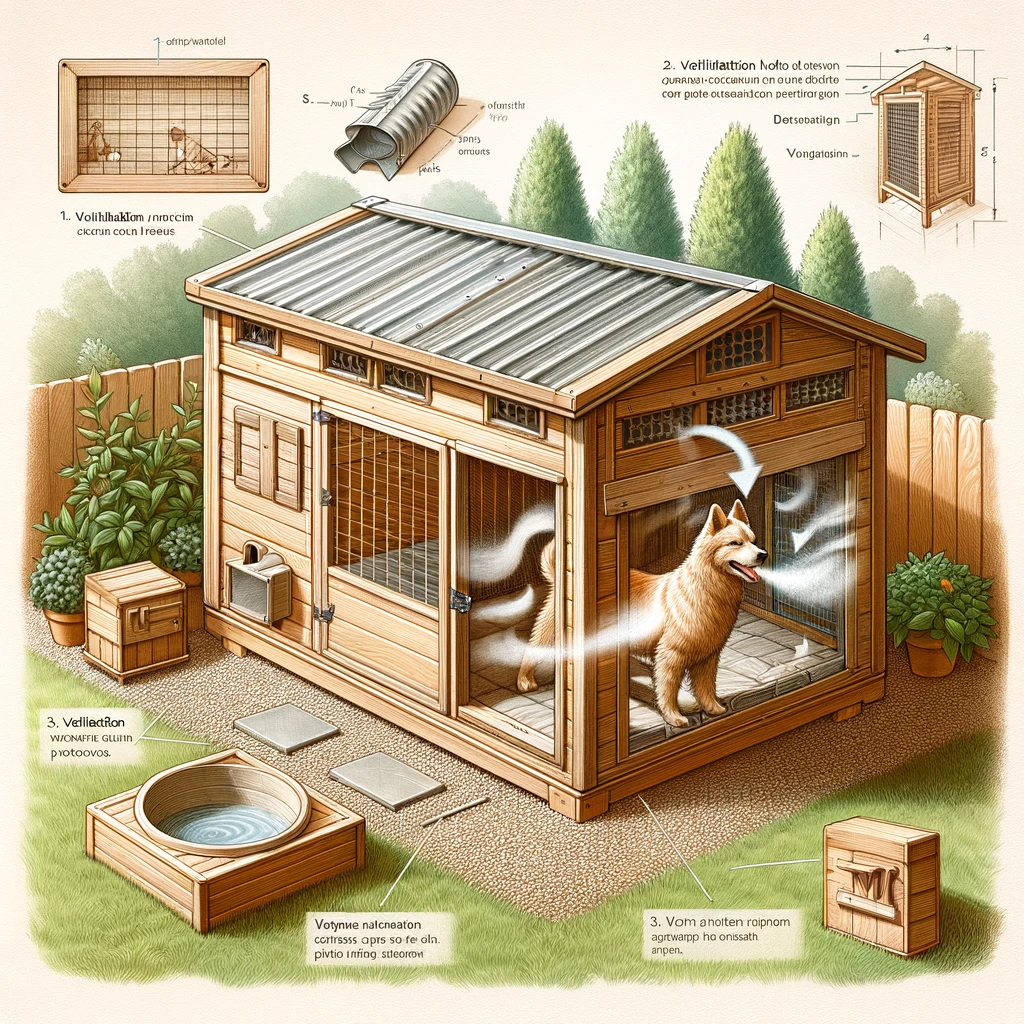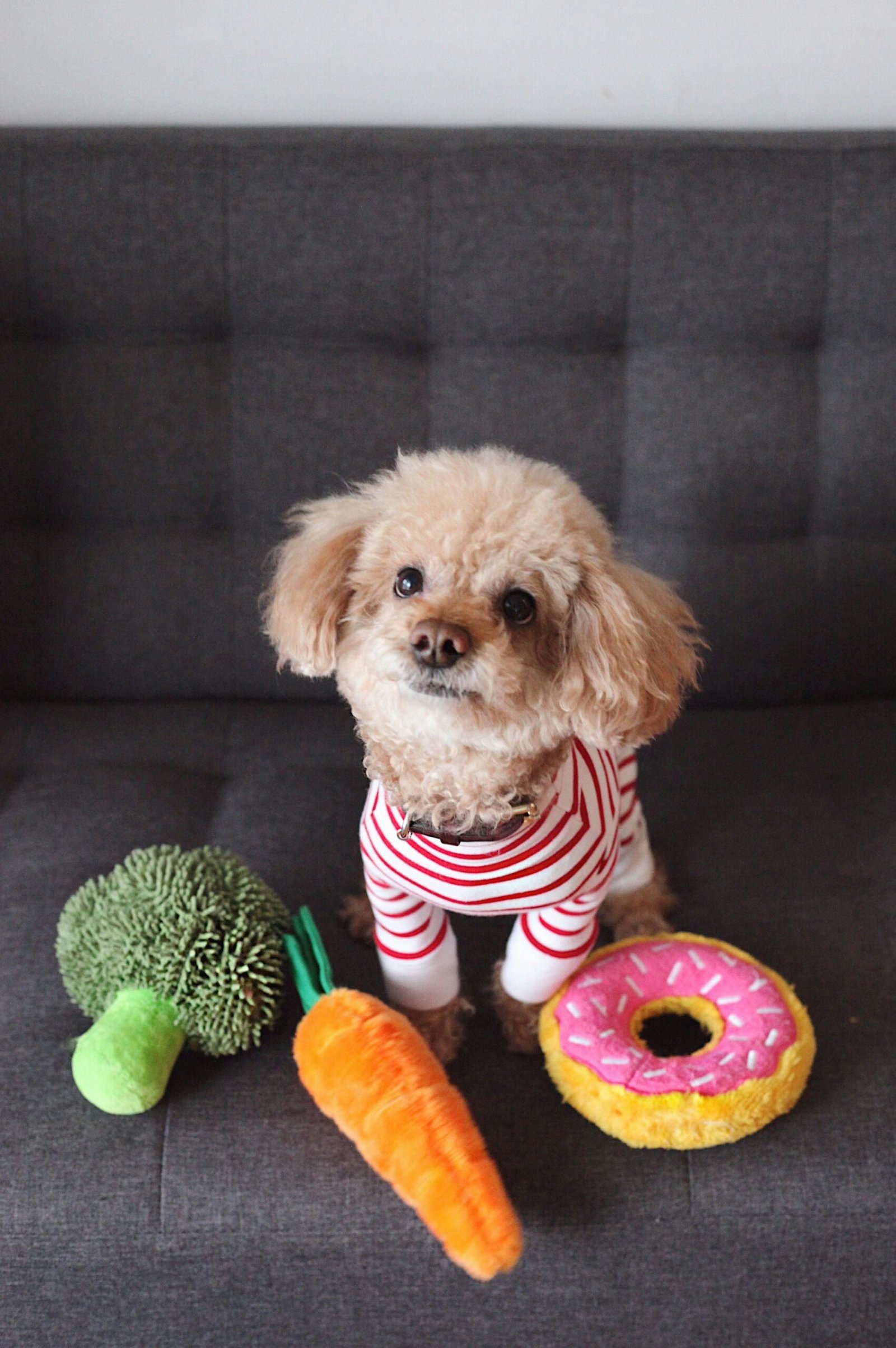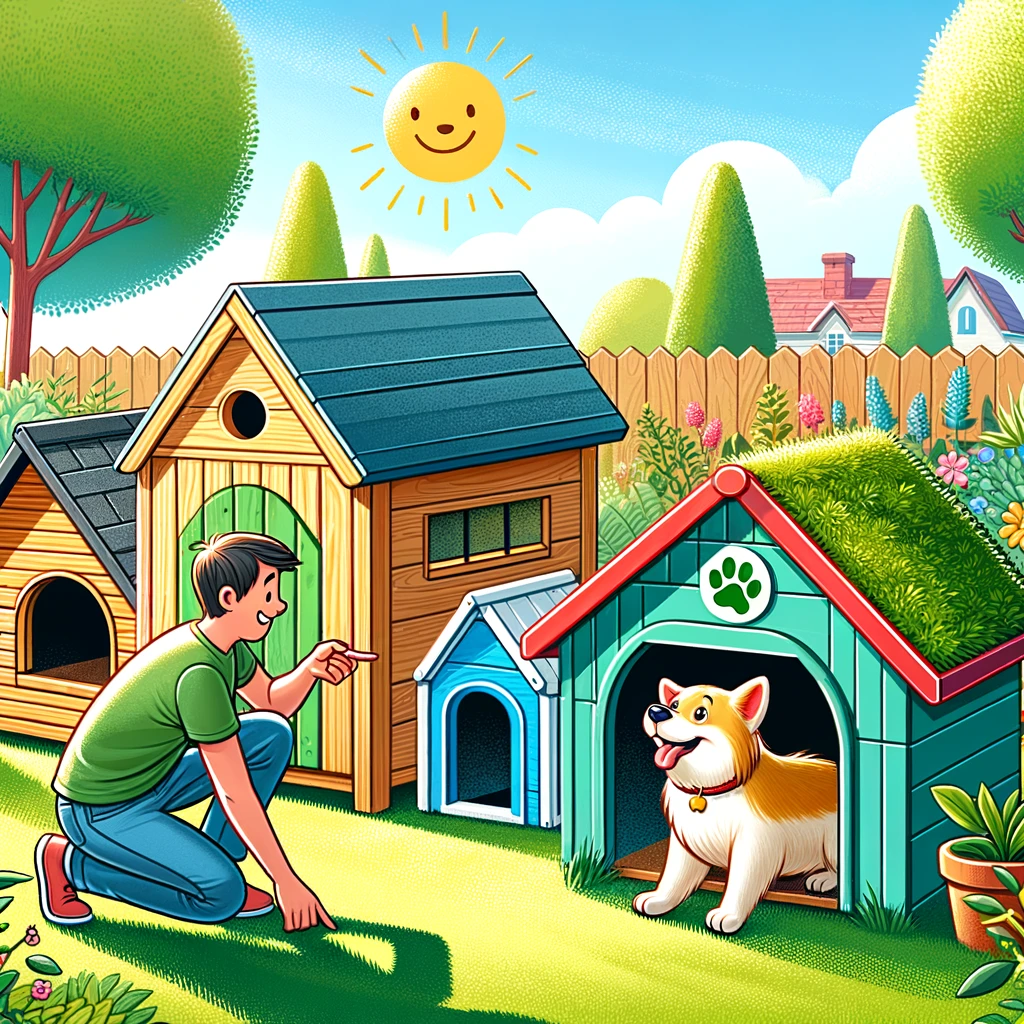Who doesn’t love a good do-it-yourself project? Especially when it directly benefits our beloved four-legged friends. If you were browsing dog kennels for sale online and nothing quite catches your eye, why not consider building one yourself?
Not only is this an excellent opportunity to put your hands to work and perhaps learn a new skill, but it also allows you to create something perfectly customized for your beloved pet. Crafting a DIY dog kennel is an experience that lets you exercise both creative freedom and practicality.
The five tips we’ll cover in this post are:
Key Takeaways
- Choose Durable Materials: That balance aesthetics, insulation, and maintenance needs, like wood or plastic, to ensure the kennel’s longevity.
- Size Appropriately: The kennel should allow your dog to move, stand, turn, and stretch comfortably without being too large to retain warmth.
- Insulate for Cold Weather: Use foam boards, thermal plywood, or heated mats to keep the kennel warm during winter, and consider a door flap to block drafts.
- Ensure Ventilation for Warmth: Incorporate roof vents or an elevated design for airflow to prevent overheating in summer, and consider ventilated door panels or temperature-controlled fans.
- Regular Maintenance and Repairs: Address wear and tear promptly, reinforcing flooring against digging, fixing cracks, maintaining doors, and keeping the kennel clean to prolong its lifespan and comfort.
It’s always satisfying to see the fruits of your labor, but when the result is a comfortable and safe haven for your dog, the reward doubles. You get to decide the materials, the size, even design aspects like whether there’ll be windows or what kind of entrance will work best – essentially everything that might make pre-made dog kennels feel like they’re lacking something.
The great thing about building your own kennel is that it doesn’t have to cost an arm and a leg either. Often times, items around the house can be repurposed or recycled into parts of the kennel.
Old wooden pallets can become walls or floors; unused carpets may serve as insulating material; leftover paints could give it a personalized color touch. And if you don’t find these items lying around your house, yard sales or thrift stores are fantastic resources if you’re on a budget.
Of course, DIY projects come with challenges too: they require time, effort, and a bit of know-how, but that’s all part of the fun. If you’ve never wielded a hammer before or feel lost when it comes to constructing things, don’t worry.
Whether it’s your first ever DIY project or an addition to your long list of homemade crafts, a dog kennel is one endeavor worth embarking on. Let’s get to it!
Tip#1: Choose the Best Materials for a Durable Dog House

As a dog owner, one of the key factors to consider when building a kennel is the material used in their construction. It’s not just about aesthetics – the longevity and durability of your chosen canine abode can often hinge on what it’s made from.
There are a variety of materials on the market, each with their own strengths and weaknesses. For example, wooden kennels are a popular choice due to their traditional appeal and excellent natural insulation properties.
Wood is robust, easy to work with, and offers you a wide range of design options. However, it requires periodic maintenance like staining or painting to prevent rotting or pest infestation.
On the other hand, there are plastic dog houses which offer impressive resistance against various weather conditions while requiring less maintenance than wood. Plastic is also lightweight which makes these kennels easy to move around your yard as needed. However, they may lack the aesthetic charm that wooden kennels bring and can sometimes be less sturdy.
There’s also metal, often utilized in heavy-duty dog kennel designs. You might see these types of dog houses in professional settings like veterinary clinics or boarding facilities where sturdiness is paramount. While durable and resistant to gnawing dogs, metal isn’t known for its insulating properties so extra steps might be needed to make your furry friend comfortable during extreme temperatures.
When considering different materials for your future purchase or DIY project remember this: there isn’t necessarily one “best” material; instead think about which one fits most suitably with your specific needs and circumstances before deciding on that perfect dog kennel for sale. While you’re considering different materials don’t forget about flooring options too!
Many forget that just as important as walls is what lies beneath your pup’s paws! Choose flooring that provides comfort but also easy cleaning – this could range from slatted wood floors elevated from the ground (great for air circulation), to sealed concrete floors (ideal for cleanliness).
It’s all about taking the time to assess what you and your canine companion need from a kennel. Taking the time now to think about material durability, insulation, aesthetics and maintenance will pay off in the future when you have a dog kennel that not only serves its purpose but is also a pleasant addition to your backyard.
Tip#2: Know the Right Size for your Dog Kennel
Getting the size right for your dog’s house is like hitting the sweet spot in a cozy home setup. It’s not rocket science, but it does need a bit of thought. You want it snug, not cramped, and roomy, but not where they feel lost. Think of it as creating a little den they can’t wait to curl up in.

So, here’s the scoop on sizing: Your pup needs to move around a bit, stand up without bumping their head, turn in circles (because we all know they love doing that before lying down), and stretch out without feeling squished. But, go too big, and they might find it hard to keep warm on colder nights.
Apex Shed Company suggests the following:
“Typically, the length of your dog house should be about 25 percent longer that your dog’s length and the width should be about 10 percent larger than your dog’s length. To determine this, multiply your dog’s length for the tip of their nose to the base of their tail by 1.25 for the length and 1.1 for the width.” (1)
Remember, it’s all about making sure they feel secure and comfy. After all, this is their go-to spot for some serious R&R.
Tip#3: Insulate for the Winter

As winter approaches, ensuring that your dog’s outdoor kennel is well-insulated becomes a paramount concern. It’s not just about providing a shelter for your furry friend, but creating a warm and comfortable haven that shields them from the harsh elements. As any seasoned dog owner would attest, not all kennels are created equal.
There are numerous ways to insulate a dog house and keep it warm during the frigid winter months. One effective insulation technique involves using foam boards or thermal plywood on the interior walls of the kennel.
This type of insulation works by trapping warm air inside while preventing cold air from seeping in. Depending upon where you live and how harsh your winters are, consider investing in a heated pet mat or bed as an additional heat source for your pet.
These mats can be placed inside the dog kennel and will provide much-needed warmth during those chilly nights and days when temperatures dip perilously low.
Of course, insulating your dog house isn’t just about keeping warmth in—it’s also about keeping cold out. One way to achieve this is by installing a door flap on the entrance of the kennel for dogs. A door flap helps reduce drafts and wind chill significantly while still allowing your pup easy access in and out.
An elevated bottom can also help protect against ground chill seeping through the floor into the rest of your pet’s cozy space!
Tip#4: Ensure Proper Ventilation for Summer
Now that we’ve looked into some of the factors for the winter months, we need to also consider the heat of the warmer seasons! A well-ventilated dog house is crucial during the scorching months of summer.
It helps keep the interior cool and gives your pet a refreshing respite from the relentless heat. The first tip for guaranteeing optimal ventilation in dog kennels is to insert one or multiple vents towards the roof of your dog kennel.
This allows warm air, which naturally rises, to escape easily and creates a pleasant airflow within the space. These vents can be as simple as drill holes or more elaborate structures with adjustable louvres or flaps.
Another idea is to build a dog kennel with an elevated design. The gap between the ground and the floor of an elevated dog house allows air to circulate underneath and around it, contributing significantly to keeping it cool.

You can always add elevation later by placing it on blocks or building a small platform. If you’re someone who prefers DIY projects over searching tirelessly through scores of pre-made dog kennels, we have another tip lined up for you!
Try building your own ventilated door panel; these are especially helpful if you live in regions where summer temperatures skyrocket dramatically. A ventilated door panel consists of slats arranged with gaps between them; this allows air to seep inside while still providing adequate shade and privacy for your pet.
Consider investing in temperature-controlled fans designed specifically for use in dog houses. These fans work wonders to combat heat, and some advanced models even feature thermostats that activate the fan only when temperatures exceed a certain threshold!
Tip#5: Keep Up With Maintenance and Repairs
Just like any other structure, dog kennels need regular maintenance and occasional repairs to keep them in top shape. One of the most common issues you might encounter is wear and tear on the floor of the kennel.

Dogs love to dig, and over time, they can cause considerable damage to their living area’s flooring. To prevent this issue, consider using reinforced flooring or installing a sturdy liner that your pet can’t easily tear up.
Now, let’s talk about maintaining the walls and roof of your dog’s outdoor home. These areas are often exposed to harsh weather elements like rain, snow, extreme heat, or cold which leads to decay or damage over time.
Regularly checking for any signs of deterioration can prevent minor issues from becoming major problems. If you notice any signs of wear such as chipped paint or wood decay, it’s time for some touch-ups.
Cracks or holes may appear in your dog’s house due to various reasons – weather conditions being one main factor again but also potential chewing by the dogs themselves if they feel anxious or bored. These breaches not only make the kennel less comfortable for your pet but also create entry points for pests.
Therefore, it’s important to patch them up as soon as they appear using appropriate materials that are safe for pets. Now onto doors – these are especially prone to damage since they’re regularly used by our furry friends going in and out all day long.
Door hinges could become loose over time due to constant activity from eager tails waggling through! A little oiling every now and then will keep things running smoothly.
Let’s not forget cleaning – though it isn’t technically a repair task; it is an essential part of maintaining your dog’s home. A good scrub down of the interiors at least once a week can help keep odors and pests at bay, making the dog kennel more inviting for your furry friend.
Remember, no matter how durable or robust those dog kennels seem initially, over time they will require some care and attention in order to stay in optimal condition. By regularly checking and promptly addressing any issues that come up, you’re not just prolonging the lifespan of your dog kennel but also ensuring it remains a comfortable and safe sanctuary for your pet.
Conclusion
There you have it—5 tips on putting together the ultimate palace for your pooch! From selecting the sturdiest materials to ensuring the size is just right, from winter-proofing to summer cooling, and keeping everything in tip-top shape, we’ve covered the A to Z of DIY dog kennel creation.
Remember, building a kennel is more than just a weekend project; it’s about creating a sanctuary where your furry best friend can dream, relax, and maybe even plot their next squirrel chase. So, grab your tools, unleash your creativity, and let the building begin.
If you’d rather buy instead of build, or would like some help introducing your doggo to their new home, this article can help:
https://puppydoghub.com/make-your-dogs-day-choose-a-dog-kennel-theyll-love/
References: (1) is an excerpt from this article: Premium Dog House Pricing and Information – https://www.apexshedcompany.com/dog-houses.html



